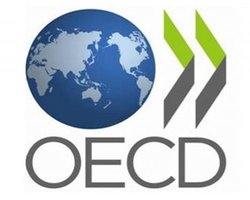The OECD’s 2012 PISA tests for math, reading and science show that Shanghai’s 15-year-olds are most likely the best educated in the world.
The 2012 Organization for Economic Co-operation and Development (OECD) Program for International Student Assessment (PISA) evaluated the knowledge and skills of 510,000 students in 65 countries and economies.
The latest findings are of the 5th survey, which runs every 3 years.
The results show that Asian countries outperform the rest of the world, with Shanghai at the top of the list in each of the three subjects.
Although PISA tests math, reading and science, the main focus is on math, because research suggests proficiency in math is a strong predictor of success in young adults.
Youngsters who are good at math tend to continue with further education and earn higher wages.
The top ten countries in each subject were as follows:
PISA test – Mathematics Top 10
- Shanghai-China 613
- Singapore 573
- Hong Kong-China 561
- Chinese Taipei 560
- Korea 554
- Macao-China 538
- Japan 536
- Liechtenstein 535
- Switzerland 531
- Netherlands 523 (USA came 36th and UK 26th)
PISA test – Reading Top 10
- Shanghai-China 570
- Hong Kong-China 545
- Singapore 542
- Japan 538
- Korea 536
- Finland 524
- Ireland 523
- Chinese Taipei 523
- Canada 523
- Poland 518 (USA came 24th, UK 25th)
PISA test – Science Top 10
- Shanghai-China 580
- Hong Kong-China 555
- Singapore 551
- Japan 547
- Finland 545
- Estonia 541
- Korea 538
- Viet Nam 528
- Poland 526
- Canada 525 (USA came 28th, UK 16th)
Students in Shanghai scored the equivalent of nearly three years schooling above most other OECD nations.
The survey also highlights some of the key features of the best performing education systems.
In Asia teaching quality matters more than class size
For example, in Asia – which dominates the top ten in all three categories – there is a strong emphasis on selecting and training teachers, setting clear targets, and giving teachers a lot of autonomy – their systems prioritize teacher quality rather than class sizes.
The countries at the bottom of the league table are Indonesia and Peru. The difference between the top of the table and the bottom is equivalent to about six years of education, says the report.
Although Indonesia lingers around the bottom of the table, the survey found it has the happiest schoolchildren.
The survey also looks at regions within countries and highlights some interesting contrasts.
For example, although the US sits around the middle of the league table, below Italy, Spain and Russia, the state of Massachusetts outperforms any of the European countries and would rank in the top 10 if it were a country.
Gender gap wider among top and weaker students
Another key finding concerns the gender gap.
Boys did better than girls in math. They scored higher than girls in 37 out of 65 countries, while girls did better than boys in 5 countries. However, the gender gap is not large: in only 6 countries does it exceed half a year’s schooling.
The gender gap is widest among top students, about the same for average students, and then wide again for the weakest students.
The survey finds that girls tend to feel less motivated to study math and have less confidence in their ability to do math than boys.
Between 2000 and 2012, the gender gap in reading performance – in favor of girls – got bigger in 11 countries and economies.
Boys and girls have similar levels of performance in science.
OECD Secretary-General Angel Gurría says:
“In a global economy, competitiveness and future job prospects will depend on what people can do with what they know. Young people are the future, so every country must do everything it can to improve its education system and the prospects of future generations.”

